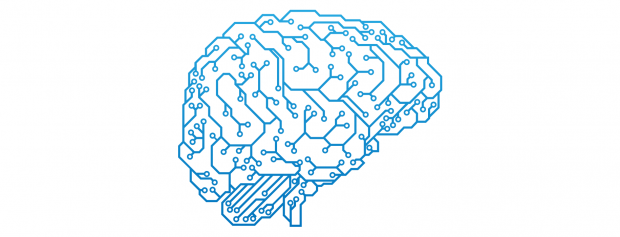7 Popular Ways To Use Natural Language Processing For Business
In recent years, more and more entrepreneurs have chosen to adopt natural language processing for their business. The capability is becoming ever-more popular as it allows business leaders to create innovative solutions that revolutionize commercial operations.
If you’re wondering how to use NLP in your business, check out these seven popular examples.
What is Natural Language Processing?
| “Thanks to AI and natural language processing, combined with human help, people will be able to talk to Messenger bots just like they talk to friends.”
Mark Zuckerberg, co-founder of Facebook |
Before we dive into the examples, let’s first explain what Natural Language Processing (NLP) actually is.
NLP is a central component of artificial intelligence. It combines elements of linguistics and programming to enable and improve communication between people and machines by teaching computers to “read,” “listen,” then “understand” human language.
It is a very demanding field that requires expertise in machine learning, deep learning, databases, analytics, and computational linguistics. And creating an NLP-based solution is a long, complicated, and involved process. That said, the number of steps required to build a particular solution will depend on the tool you want to create.
How does NLP work?
The most complicated part of NLP is ‘natural language processing from spoken language.’ This is where the system must process human speech into a computer-readable format.
This part of the process usually requires recurrent neural networks (RNN), long short-term memory (LSTM) networks, and time-delay neural networks (TDNN) to convert spoken word into text that’s usable for an NLP system.
Computer models follow a series of coded grammatical rules that allow the system to interpret and understand what we’ve said. The system then divides our speech into short fragments and searches for phonemes (the smallest unit of speech).
The system now compares the phonemes with previously-recorded speech, using the comparison to read and convert spoken words into written text that a computer can understand.
As with any AI solution, Natural Language Processors need a vast database from which to learn. And the more high-quality data you have, the better the tool you’ll be able to build.
A large volume of data helps the system extract the meaning of spoken words and interpret them accurately. When the computer has converted spoken language into a computer-readable format, it can analyze and understand the context of the text.
There are several ways to do this. But the most common approach is to use algorithms and ready-to-use libraries.
Libraries help break down and analyze the syntax and meaning of both individual words and complete sentences. The system usually does this by dividing longer pieces of text into smaller fragments, identifying and marking the parts of speech in the sentences, then giving meaning to the individual words by analyzing their context.
The final step in creating an NLP-based solution is creating a computer action based on the human command: in the case of a chatbot, this could mean answering a customer query.
7 popular examples of NLP in business
We know what NLP is and how it works, now let’s look at some practical applications — below you can find some of the most popular ways to use NLP in a business context.
1. Chatbots
Undoubtedly, one of the most popular applications of NLP is chatbots. You find them on websites, you see them on Slack. And they work based on patterns used to process and analyze written text, then returning an appropriate response.
As NLP can process everyday human language into a computer-readable format, today’s chatbots can not only answer questions. They can share links and instructions with customers — or direct users of a given portal or shop.
In the context of business chatbots, it’s worth noting one major benefit: intent classification can automatically find purpose and goals in text.
This is significant from a business perspective because it can positively impact the user experience alongside driving revenues. How so? Well, machine learning algorithms can assign words or expressions to a particular intention (for example, a model can learn how specific terms are associated with buying behaviors).
Intent classification is also useful for fostering better customer relationships: say, the model detects a person is dissatisfied with the quality of service.
It can quickly remedy the situation by linking the customer to ‘real-life’ support.
2. Social media monitoring
Natural language processing also plays an essential role in social media monitoring. SentiOne uses NLP to track online sentiment based on digital discourse, analyzing whether the opinions of a particular company, person, or term are positive or negative.
In such a context, NLP makes it easy to monitor (and respond to) comments — while being aware of brand opinion can help companies respond to their clients’ needs by creating better products and services.
3. Smart speakers
Alexa by Amazon and Google’s Home Assistant are now omnipresent. If you’ve ever wondered how they work, it’s thanks to natural language processing.
NLP means smart devices can not only answer questions such as “what time is it?” or “what’s the weather like today?” They can also (if connected to other devices) perform actions like switching off a light or TV, even adjusting the temperature of your house.
4. Auto-complete and auto-correct
Though they may cause the odd confused and furrowed brow, textual auto-correct and auto-complete in messaging and email is another widespread use of NLP.
In such instances, the system anticipates your intentions based on what you’ve written, but that’s not all. Algorithms can learn your style of writing by analyzing what you’ve written before. Then, offer ever-more personalized suggestions in your specific tone of voice.
Auto-complete and auto-correct are also useful for search engines. For instance, they can predict what you want to find based on popular search queries.
5. Spam filters
NLP applications also help with email classification, particularly on services like Gmail. Initially, they only acted as spam filters, detecting words or phrases that would classify an email as spam-worthy.
Today, however, the capabilities are more sophisticated. The systems can analyze the context of individual messages and divide inbound mail into three categories: primary, social, or promotions.
6. Candidate screening
If you work in recruitment, NLP-based technologies also apply to you. HR departments often have to review hundreds, if not thousands, of applications for a single job. That’s a whole lot of CVs.
NLP can reduce the workload by scanning documents for keywords and filtering out the least relevant applicants. Importantly, as the algorithms focus solely on the text, they eliminate the risk of “human” bias or subconscious prejudice and increase candidate diversity.
7. Voice activation and commands
Nowadays, almost every device can benefit from an interface that lets users communicate with the tool by voice. Some 50% of American households already use voice commands to access online content, while voice-activated IoT devices are commonplace in the modern world.
And we’re not just talking about smart speakers and TVs. A Tokyo-based start-up by the name of ili created a tool that can translate simple phrases for travelers without internet access.
These are just a handful of commercial applications that use natural language processing. The truth is, the possibilities are almost endless. You can use NLP in any context you can imagine, delivering business benefits like a better customer experience, improved marketing performance, and higher sales.
If you’d like to explore what NLP can do for you, DLabs is here to help.
Sources:



